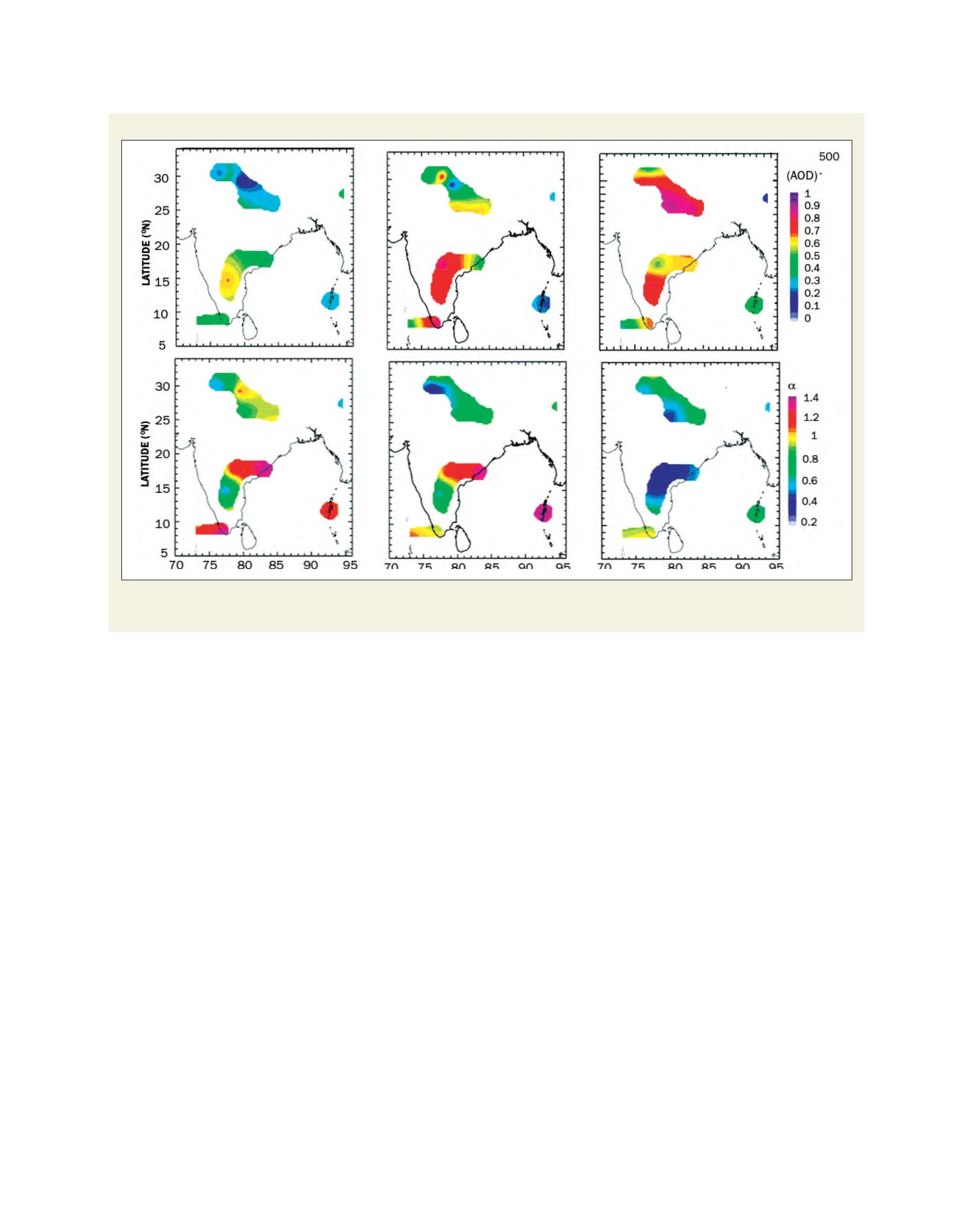

[
] 160
O
bserving
, P
redicting
and
P
rOjecting
c
limate
c
OnditiOns
balloon payloads. To understand the distribution of chlorofluorocarbons
(CFCs)measurements of vertical distributions weremade using high alti-
tude balloons and cryogenic air samplers. A comparison of surface ozone
levels at Ahmedabad shows an average linear rate of 0.5 per cent y-1
during the period 1954/55 to themid 1990s.
32
In addition, ozone produc-
tion per molecule of NO
x
is lower in India than in the USA or Europe.
33
Simultaneous measurements of surface level CO, NO
x
and non-methane
hydrocarbons, as well as OC to BC ratio have indicated dominance of
biomass burning over fossil fuel, especially in north India.
34
These factors
lead to the observed higher ∆CO/∆NOx. Satellite data show increasing
levels of columnar NO
2
at many Indian sites. These gases, having long
residence time in the free troposphere, are transported long distances.
Vertical distributions of ozone and surface level measurements of various
trace gases over India and the surrounding oceans clearly show the influ-
ence of long-range transport of these pollutants from North Africa and
southern Europe, especially during the winter.
35
Future directions
Reducing uncertainties in current understanding of the climate impli-
cations of aerosols and trace gases requires progress in all aspects
of aerosol-climate science. New observational systems, field experi-
ments, assimilation methods and regional and global scale synthesis
are essential. The large difference between observed and modelled
aerosol radiative impacts is due to inadequate modelling. This calls
for more realistic simulations of aerosol, clouds, and atmospheric
processes to be incorporated into models, and greater synergy among
different types of measurements, models, as well as
between measurements and models. Incorporation of
the mixing state of aerosols in models is still something
of an enigma.
36
When smaller aerosols accumulate over
larger ones the radiative impact is significantly different
compared to that of an external mixture.
37
This is partic-
ularly important over the Asian region, where natural
and anthropogenic aerosols coexist.
The vertical distribution of aerosols with respect to
clouds is important, particularly over the tropics, to further
our understanding of aerosol-cloud interaction and the
consequent impacts on ARF. The surprising observation
of elevated aerosol warming and its northward gradient
over India – as well as possible implications for regional
weather and climate – will be the immediate focus. To
quantify this an ARFI field Regional Aerosol Warming
Experiment (RAWEX) is planned, which will carry out
intense observations over the Himalayas and its foothills.
In the longer-term, future ISRO programmes on aerosol
and radiation will be built on the synergy of ground-based
observational networks (eventually leading to regional
mapping of aerosol radiative forcing), three-dimensional
mapping of physical and chemical composition using
integrated campaigns, satellite missions focusing on space-
time synthesis of aerosols, and accurate assimilation of all
these studies into regional and global models.
Space-time synthesis of AOD
Source: ICARB, I_GBP
Space-time synthesis of the AOD showing the large heterogeneity in AOD (top row) and its wavelength dependency expressed through the Angstrom exponent �
(bottom row). The panels in each row correspond to months of March, April and May, from left to right
















